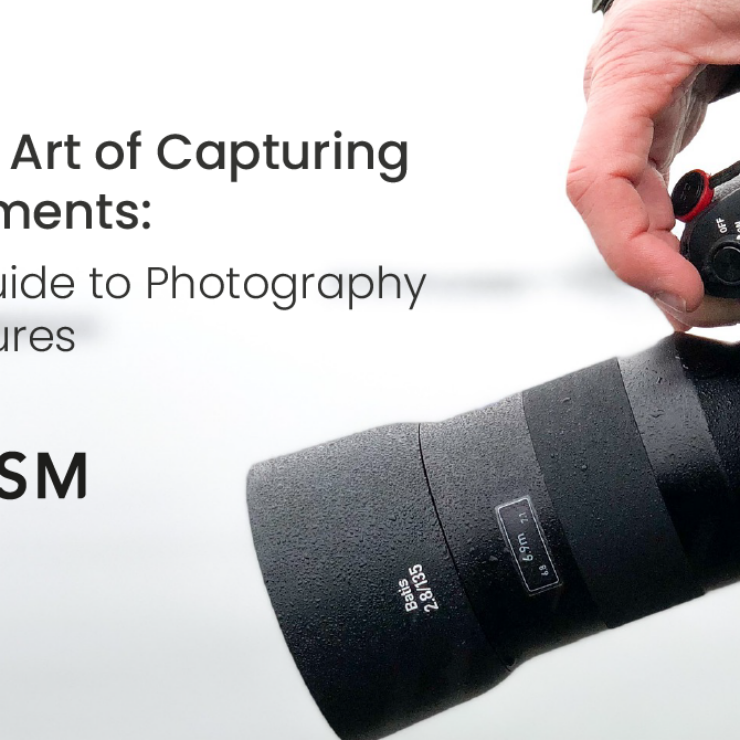“Create stunning photography portfolio websites that attract clients and grow your business with essential tips and tools.”
In today’s digital age, having an online presence isn’t just beneficial for photographers—it’s essential. Whether you’re a seasoned professional or an emerging talent, a well-crafted photography portfolio website can make all the difference in attracting new clients and securing gigs. It’s your chance to display your unique style, skills, and creativity, all while providing potential clients with an easy way to contact you and book your services.
But where do you start? Choosing the right platform and features can feel overwhelming with so many options available. This guide will walk you through the critical aspects of creating a photography portfolio website that looks good and works hard for you.
Why You Need a Photography Portfolio Website

You might be thinking, “Do I really need a website? Can’t I just use social media to showcase my work?” While platforms like Instagram and Facebook are great for reaching an audience, they don’t offer the same level of control or professionalism as a dedicated website. A photography portfolio website allows you to:
- Showcase Your Work Professionally: Your website is your gallery, free from distractions like ads and competing posts. You can curate it to reflect your brand and style.
- Attract Clients: A professional website can help you stand out in a crowded market. It shows potential clients that you’re serious about your craft and gives them an easy way to view your work and contact you.
- Control Your Brand: Unlike social media, where algorithms dictate who sees your posts, your website is entirely under your control. You decide what to showcase and how to present it.
- Improve Your Visibility: Proper SEO can help your website be discovered by people searching for photographers in your area or specializing in your niche.
- Sell Your Work: If you offer prints or other products, your website can serve as an e-commerce platform, making it easy for clients to purchase directly from you.
Essential Features of a Photography Portfolio Website

When creating your website, you want to include essential features that enhance user experience and support your business goals. Here are the key elements every photography portfolio website should have:
1. High-Quality Images
The quality of your images is non-negotiable. Upload only your best work, and make sure the images are high-resolution to showcase the details. However, be mindful of the file sizes to avoid slow loading times, which can frustrate visitors.
2. Easy Navigation
Your website should be easy to navigate. Organize your portfolio into categories or galleries that reflect your specialties, such as weddings, portraits, landscapes, etc. Ensure the navigation menu is simple and intuitive.
3. About Me Page
This page is where you get to tell your story. Potential clients want to know who they’re hiring, so share your journey, passion for photography, and what sets you apart. A personal touch can go a long way in connecting with your audience.
4. Contact Information
Make it easy for visitors to get in touch with you. Include a contact form, your email address, and social media links. Ensure the contact page is easy to find, preferably linked in the main navigation.
5. Client Testimonials
Word of mouth is powerful. Including testimonials from satisfied clients can build trust with potential clients. Positive reviews prove that you’re talented but also professional and reliable.
6. Mobile Responsiveness
With many smartphone users, your website must look great on all devices. Ensure your site is mobile-responsive, adjusting to fit any screen size without compromising quality or user experience.
7. SEO Optimization
SEO (Search Engine Optimization) is crucial for discovering your website on search engines like Google. Use relevant keywords, write descriptive image alt texts, and keep your site structure clean to improve your rankings.
8. Blog or Journal Section
A blog can help you connect with your audience on a deeper level. Share behind-the-scenes stories, photography tips, or client experiences. Regular updates can also improve your SEO, driving more traffic to your site.
Essential Studio Manager: Streamline Your Photography Business

One tool that can significantly enhance your photography business is Essential Studio Manager (ESM). While building your portfolio website is crucial, managing your business effectively is just as important. Essential Studio Manager offers a comprehensive solution that helps you handle the administrative side of your work, allowing you to focus more on your creative projects.
What is Essential Studio Manager?
Essential Studio Manager is an online platform designed specifically for photographers. It helps you manage your bookings, invoices, contracts, and client communications—all in one place. By integrating ESM with your photography portfolio website, you can streamline your workflow, making it easier for clients to book and pay for your services.
Key Features of Essential Studio Manager:
- Client Management: Manage all your clients and their projects in one easy-to-use interface. View contact information and project details and even schedule follow-up reminders.
- Booking System: ESM offers a seamless booking system that can be integrated into your website. Clients can view your availability and book sessions directly, reducing back-and-forth emails.
- Invoicing and Payments: Create and send invoices, and receive payments online. ESM supports various payment gateways, making it convenient for clients to pay you securely.
- Contracts: Generate contracts tailored to your needs and send them for digital signatures. This feature ensures you and your clients are on the same page before the work begins.
- Task Management: Stay organized with a task management tool that lets you set deadlines, track progress, and prioritize tasks.
- Reporting: Get insights into your business with reports on income, expenses, and client data. This feature helps you make informed decisions to grow your business.
How to Build Your Photography Portfolio Website
Building a photography portfolio website can seem daunting, but it doesn’t have to be. Here’s a step-by-step guide to help you get started:
1. Choose a Platform
The first step is choosing a platform to build your website. Popular options include WordPress, Wix, and Squarespace. Each platform has pros and cons, so consider your technical skills, budget, and design preferences.
- WordPress: Ideal for those who want complete control over their website. It offers countless themes and plugins but requires more technical knowledge.
- Wix: A drag-and-drop builder that’s easy to use. It’s great for beginners but has fewer customization options.
- Squarespace: Known for its sleek, modern templates. It’s user-friendly and offers good support, but it can be more expensive.
2. Select a Template
Once you’ve chosen a platform, select a template that suits your style. Look for a template designed specifically for photographers, with large image displays and minimal distractions. Make sure it’s mobile-responsive and customizable.
3. Customize Your Design
After selecting a template, customize it to reflect your brand. Use consistent fonts, colors, and layouts to create a cohesive look. Don’t clutter your site with too many elements; let your photos be the focus.
4. Upload Your Portfolio
Organize your work into galleries or categories that make sense for your audience. For example, if you specialize in wedding photography, create a dedicated gallery showcasing your best wedding shots. Be selective—quality over quantity.
5. Optimize for SEO
To improve your site’s visibility on search engines, follow these SEO best practices:
- Use relevant keywords: Incorporate keywords naturally into your titles, descriptions, and content.
- Optimize image alt text: Write descriptive alt texts for your images to help search engines understand their content.
- Create meta descriptions: Write compelling meta descriptions for each page to encourage clicks from search engine results.
- Improve page speed: Ensure your site loads quickly by optimizing images and minimizing code.
6. Integrate Essential Studio Manager
Integrate Essential Studio Manager with your website to streamline your business operations. Add the booking system and contact forms to your site, making it easy for clients to schedule sessions and communicate with you.
7. Launch and Promote
Before launching, thoroughly test your site on different devices and browsers to ensure everything works smoothly. Once you’re satisfied, go live! Promote your website on social media, include it in your email signature, and share it with your network.
Conclusion
Creating a photography portfolio website is crucial in building a successful photography business. It allows you to showcase your work, attract clients, and establish your brand in a competitive market. You can create a website that looks great and supports your business growth by including essential features, optimizing for SEO, and integrating tools like Essential Studio Manager.
Remember, your website is often the first impression potential clients will have of your work—make it count! With careful planning and attention to detail, your photography portfolio website can become a powerful tool in your professional journey.
FAQs About Photography Portfolio Websites
Q: How often should I update my portfolio?
A: It’s a good idea to update your portfolio regularly, especially after completing a significant project. This keeps your work fresh and shows potential clients you’re active and current.
Q: Can I use my website to sell prints?
A: Absolutely! Many photography portfolio websites include an e-commerce section where you can sell prints and other products. Ensure you have high-quality images and a reliable payment system in place.
Q: Do I need a blog on my photography website?
A: While not mandatory, having a blog can be beneficial. It allows you to share your expertise, connect with your audience, and improve your site’s SEO. Blog posts about your shoots, photography tips, and industry news can attract more visitors to your site.
Q: How do I make my website stand out?
A: Focus on showcasing your unique style and providing an excellent user experience. High-quality images, easy navigation, and a personal touch in your “About Me” section can make your website memorable. Integrating tools like Essential Studio Manager can also enhance functionality and set you apart from the competition.
Q: Should I hire a professional web designer?
A: Hiring a professional web designer can be a great investment if you have the budget and want a highly customized site. However, many photographers successfully build their websites using user-friendly platforms like Wix, Squarespace, or WordPress, even without design experience.
Q: How can I drive traffic to my website?
A: In addition to SEO, consider using social media, email marketing, and online advertising to drive traffic to your site. Collaborating with other photographers or businesses and guest posting on relevant blogs can also increase your visibility.




